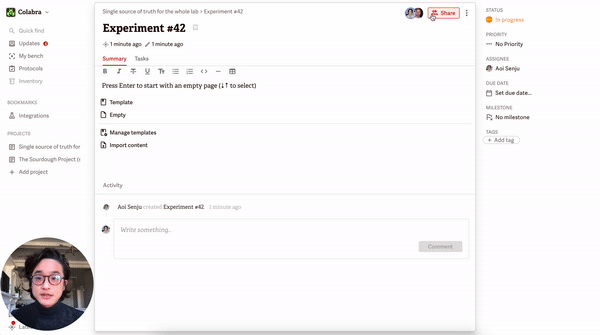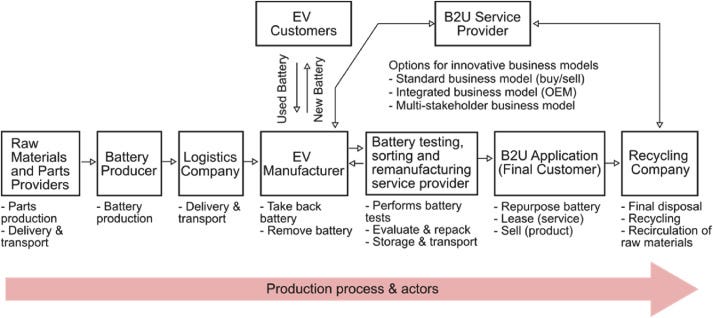No, we are not a #crytpo channel but with all the news around blockchain, crypto, and web3, we had to cover it. In this feature, we dive a bit into how blockchain can be applied to the battery industry.
🗣 A Word From Our Sponsor 🗣
Today's Intercalation Station is brought to you by Colabra, an R&D platform that integrates scientific data and task management into a single collaborative workspace.
Back when I used to do lab work, I remember how complex my research would get. I had weekly presentations on Google Slides, files on Dropbox, project management on Trello, and data built up through the years on my local drive. Even worse was when I had to quickly find the experimental setup and results that an ex-employee ran 3 years ago.
The Colabra team built their product based on the realization that scientists were wasting time on data and workflow challenges that had been solved in other verticals years ago.
If you’ve ever wasted time searching for your research data, or if you’ve tried other electronic lab notebooks and found them too slow, clunky, and unintuitive, these were the problems Colabra was designed to address. All Colabra features, including note-taking, task management, inventory, protocols, and collaboration, are free forever up to 5 users, so there’s no risk in trying it out.
How can blockchain technology be applied to batteries?

In a simplified explanation, blockchain is a type of shared database that differs from a typical database in the way that it stores information; blockchains store data in blocks that are then linked together via cryptography (read Investopedia for more details). There are several key features of blockchain:
Decentralization: Information on transactions is spread in the network.
Immutable: Data stored in the chain are immutable and permanent which facilitates the detection of possible frauds.
Accessibility: All transactions are shared with all users which allows greater transparency.
The battery value chain is long and complex and involves many moving parts, and generally can be quite opaque to an outsider.
Blockchain technology could potentially be used as a platform for battery tracking to allow for greater transparency and traceability across the supply chain from cradle to grave. It ensures visibility on features like chemistry, authenticity, performance, life expectancy, and so on, and also has the potential to prevent misuse.
Use cases where blockchain could be applied (we dive into each topic below):
Making batteries. Raw materials come from mines across the country, are processed by various chemical companies, and when combined with many other components before going into cells, packs, and then full working systems.
Using batteries. The behaviour and usage of batteries are all completely different based on various applications (electric scooters are night and day with eVTOLs).
Re-using and recycling batteries. A lot of data is required with different batteries coming to the end of life in order to know what to do with them next, what second-life applications they should go to, or whether they should be recycled.







